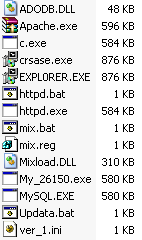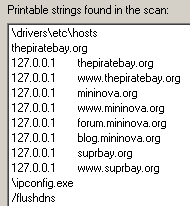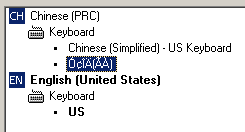By Gerhard Eschelbeck
 As 2010 winds down, I wanted to pull out the crystal ball and talk for a moment about where the security industry seems to be heading in the coming year, and where we anticipate threats and targets.
As 2010 winds down, I wanted to pull out the crystal ball and talk for a moment about where the security industry seems to be heading in the coming year, and where we anticipate threats and targets.
Mobile platforms: If you’re reading this, there’s a good chance you have either an iPhone, an Android phone, or a Blackberry in your pocket, case, or on your desk right now. If that’s true, then the data on that device is the next big target for criminals, and the newest front in the war on cybercrime. Users have embraced the advantages of mobile platforms, and even though IT admins may officially consider some or all of them “unsupported” in some organizations, you can’t abandon users who will choose convenience over strict IT policy. I predict that mobile platforms will continue to grow at a rapid pace, and we’ll soon reach the threshold level where malware creators start to take notice in significant numbers. IT admins should embrace these new platforms, and take steps to protect users who insist upon having them, even though doing so may make their work harder.
Social engineering: Whether you use a single PC at home, or manage a network of 25,000 laptops and desktops at work, social engineering scams have become so convincing that it’s a wonder IT admins ever get a good night’s rest.
It doesn’t matter how comprehensive your patch and update schedule is — when a sufficiently convincing spam email reaches a gullible employee, all bets are off. With targeted attacks becoming more common, the best defense against this threat continues to be education. Every user, from the newest administrative assistant to the C-level executives, needs training in identifying and avoiding fraudulent email and other messages, harmful file attachments, and Internet behavior that can lead to trouble.
Cloud vs. Desktop: We’ve seen demand for cloud-based services increasing across all segments of the business. In small and medium-sized businesses, we’re continuing to see strong demand for cloud-based solutions, and we expect that to continue next year. Overworked admins like the ease of administration and the performance benefits of cloud security services. And for the first time, we’re seeing consumers getting interested in the advantages the cloud brings to PC protection, including the speed that updates make it to the user of an infected computer.
At the larger end of the enterprise business segment, IT administrators must juggle the requirements of government regulations with the performance advantages that cloud services have to offer. In those cases where security regulations may not permit some kinds of data to move out into the wider Internet, we’ve seen a demand for what we call private cloud architecture — something that offers the performance benefits and features of a cloud solution, within an organization, while, at the same time, satisfying regulatory constraints on how companies move or store data.
We also can see how criminals have developed a taste for the vast volumes of sensitive data stored in the cloud, and anticipate that malware creators and other attackers will try to steal data stored in the cloud with increasing frequency.
Security Updates: More than 60 percent of malware attacks come from known vulnerabilities, so no matter whether you’re a one-person shop, or manage many thousands of desktops, maintaining not only the operating system but also the third party applications on which you (and your organization) depend should be a top priority. Besides office applications, attacks in the past year have focused on programs like Adobe Reader, Java, Flash, AutoCAD, media players, graphic design tools, and various browsers and browser plug-ins. IT departments should never let a new computer get to an employee that has anything older than the very latest build of these critical applications.
Consolidation: While not expressly a security trend, larger companies — some in the security space, and some that have not previously played there — have been augmenting their offerings. Intel’s purchase of McAfee, for example, appears to extend their platform beyond mere chipmaking. Other acquisitions, such as Webroot’s purchase of Brightcloud and Prevx, help companies acquire capabilities that can defend against, or remediate, a specific kind of threat. HP, IBM, and Symantec have done similar things, and with each acquisition, the companies gain another part of a toolkit they can use to respond to emerging threats. We expect to see more companies in this space merge and transform themselves over the next year.













































































